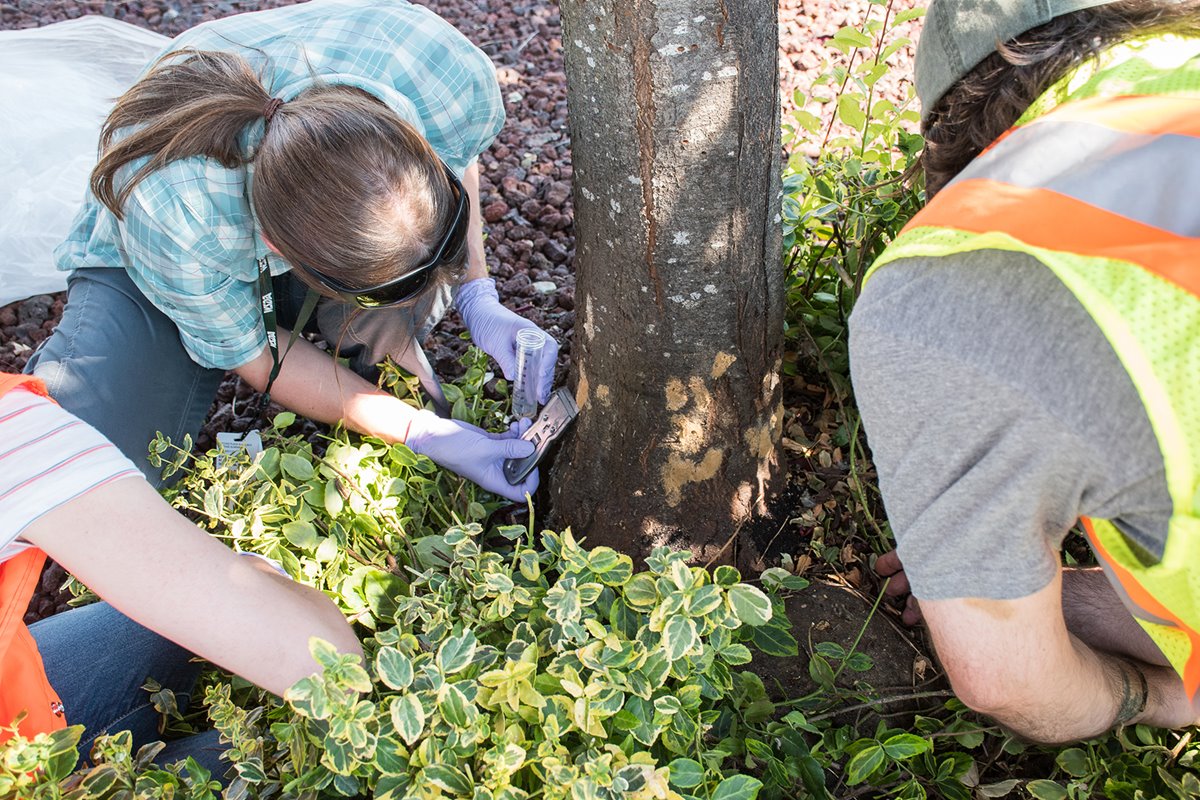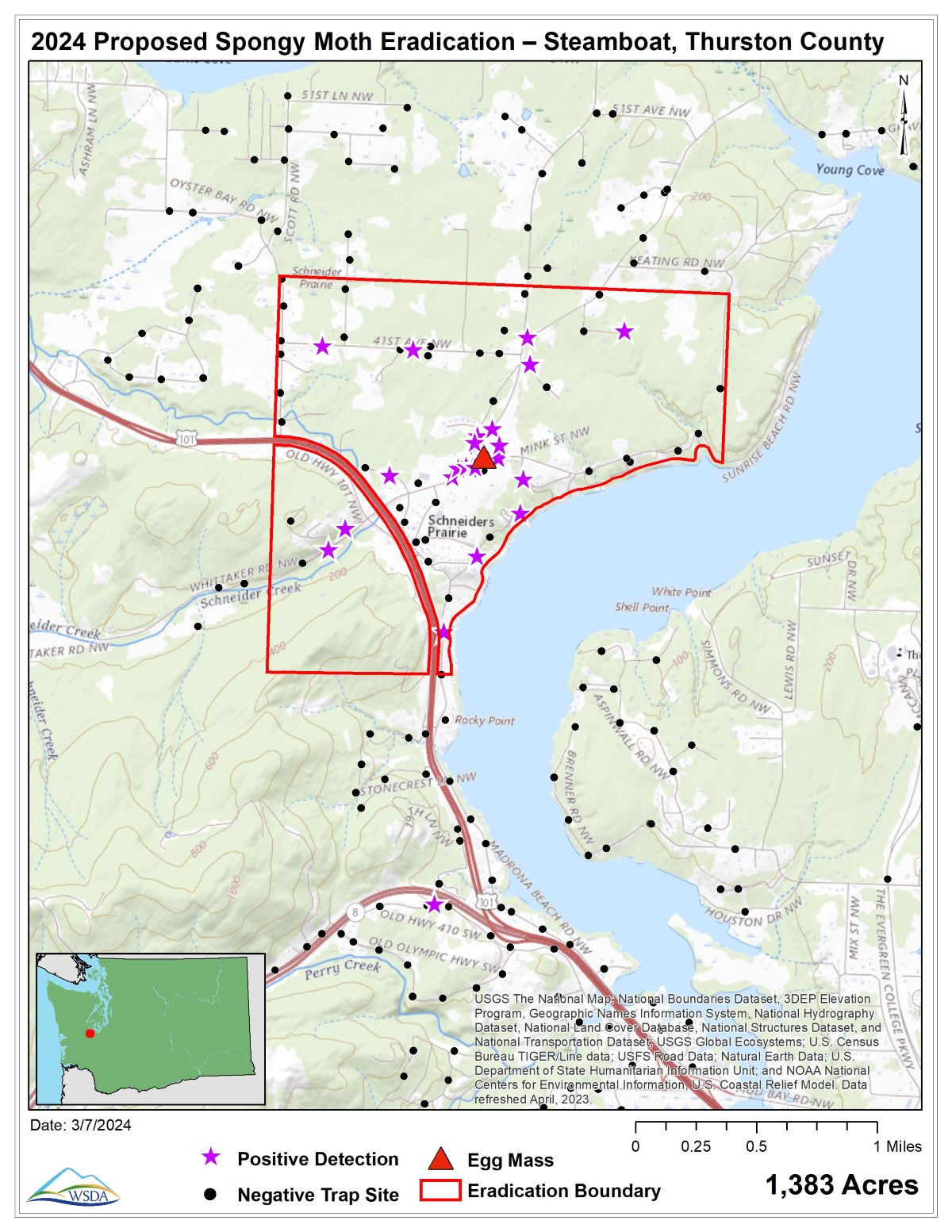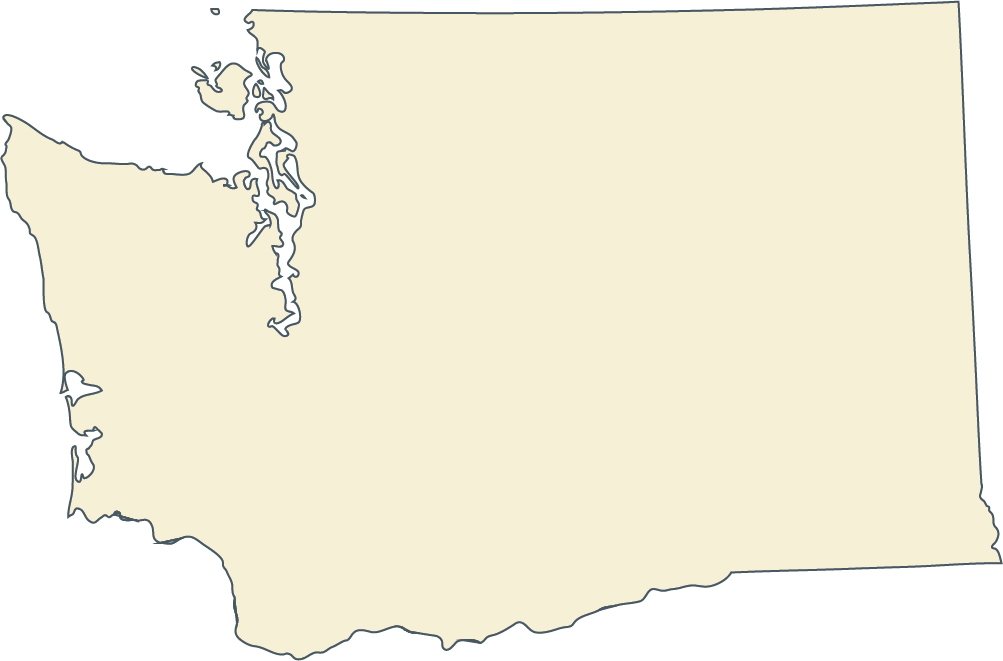Trapping
WSDA places thousands of traps throughout the state to monitor for spongy moth introductions. Most years, the trappers find at least a few moths. They usually get to the state by hitchhiking on outdoor items that people bring when moving from an infested area to Washington. Although there are programs to prevent it, spongy moths can be moved into the state on cargo entering our marine and rail ports.
When a spongy moth is detected, WSDA’s trapping team immediately deploys additional traps in the area to find out if there are more moths there and how far they have spread.





